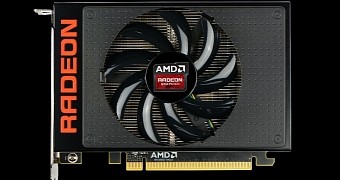Although custom cooling solutions and even materials for the external finish can be changed, AMD considered that it would not allow its partners to alter its performance specs.
You could say that a better cooling solution could encourage manufacturers to increase the base frequency of a card's memory or maybe the core clock. In AMD's Radeon R9 Nano, this won't be the case.
According to Expreview website, the custom versions of the AMD Radeon R9 Nano will have to keep the same form-factor of the graphics and should be compliant with mini-ITX standards at all times. The thermal design power of Radeon R9 Nano custom version should be identical with AMD's factory version.
The new card has been launched last week and is considered the most powerful mini-IX card available. It carries the same "Fiji" die as its bigger Fury and Fury X brothers and packs the same HBM stacked memory technology as well. The "Fiji" GPU will carry 4096 stream processors, 256 texture mapping units, 64 raster operations pipelines and 4096-bit HBM memory bus.
It's interesting to see why AMD chose to limit the custom versions of its Radeon R9 Nano. Apparently, the company wishes that its mini-ITX standards should be respected to the letter. Users who would want superior performance from their Nanos could buy some liquid-cooling or hybrid version of their cards and overclock it themselves. Unfortunately, the voltage regulator on the Nano is different than the one on the Furies, so even the overclocking feature will be limited.

 14 DAY TRIAL //
14 DAY TRIAL //